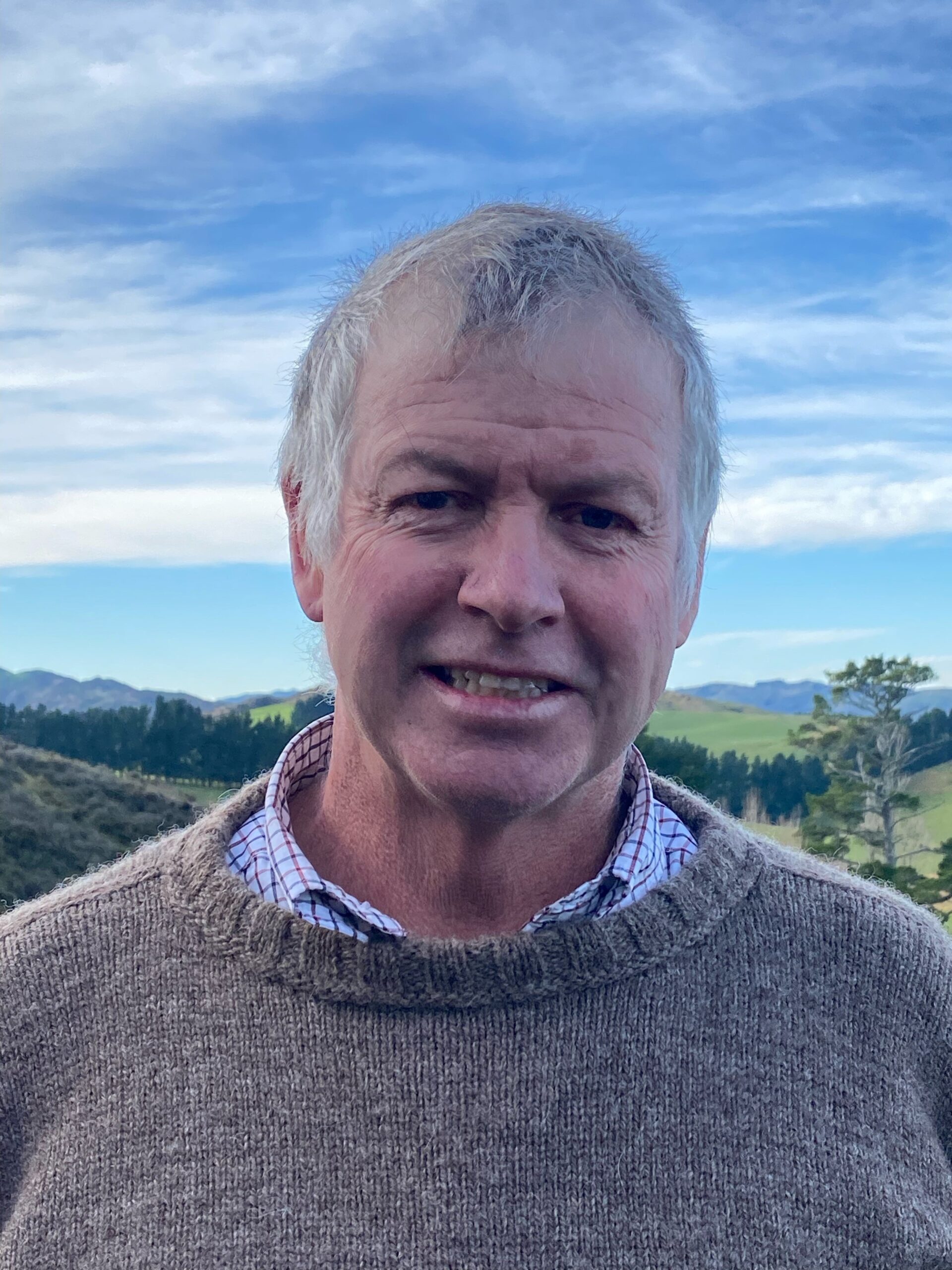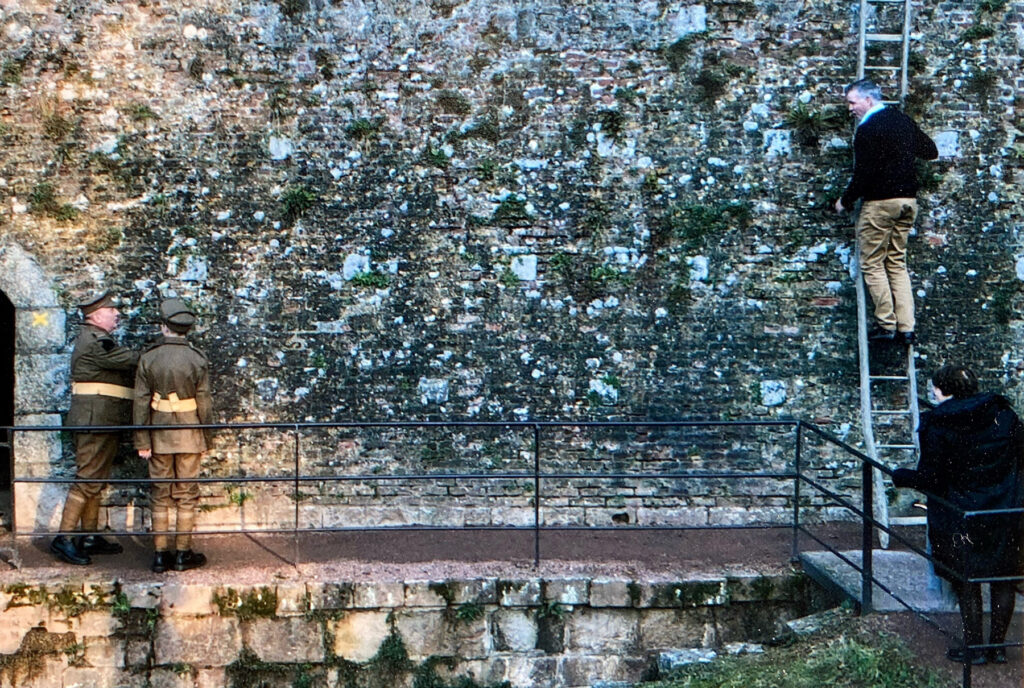Keeping history alive through stories, pictures, and passion.
One hundred years to the day and minute, Andy Fox stood in the exact same spot his grandfather did before he climbed a ladder to scale the walls of the French town of Le Quesnoy during World War One.
A photo was taken that day on November 4, 2018, when Andy and his family were attending the 100-year anniversary of the town’s liberation from German occupation.
There’s Andy, standing five rungs up the ladder, just as 21-year-old Second Lieutenant Leslie Averill (his grandfather) would have done. Averill was the first soldier to ascend the ladder which led to the liberation.
“To spare civilian casualties and eliminate any need for artillery and bombing, their rather daring plan to gain entry to the town was to climb the walls using a ladder and open the gates for the rest of the force to enter,” says Andy.
The North Canterbury farmer has visited Le Quesnoy many times because of his grandfather’s connection to the town.
Andy is now a supporter of the NZ Liberation Musuem – Te Arawhata which opens in the French town on October 11. It will commemorate the triumph of Kiwi soldiers who liberated the people of Le Quesnoy and the approximately 12,500 New Zealanders who died in Europe during World War One.
For Andy, history is not just an interest, it’s in his blood. He collects classic cars, knows war history in great detail, and he smiles proudly when he talks about his farm being in the family for 150 years.

Andy’s son George currently works the farm with him so he’s hoping it will stay in the family a little longer. “Succession planning is really difficult,” he says.
He loves sharing excerpts from history books, telling stories, and showing old photos, including a 1918 aerial reconnaissance photo of Le Quesnoy that highlights the scale of the walls, all with the aim of keeping history alive for future generations.
Andy’s version of the liberation
He knows the story of his grandfather’s exploits in Le Quesnoy so well that when he tells his version of events he transports you back in time to the days around November 4.
“A 21-year-old New Zealander, who happens to be my grandfather, has ended up in command of a group of men after rapid promotion following the battle of Bapaume – a very intense battle three weeks pervious where casualties were high.
“At one stage, this young man was the only surviving officer in his Company. He is in charge of leading a group of men of the 4th brigade from the New Zealand expeditionary force. At least 500 Germans have well defended positions in the town.”
He continues to set the scene for the liberation with descriptions of everything from the town to the mood of the German troops.
“Le Quesnoy is a small town that is completely surrounded by eight metre high walls, and in places a moat, with the fortifications built 400 years earlier.
“As luck would have it, just before my grandfather climbed the wall, the Germans decided to leave their positions after becoming aware that the town was totally surrounded by the Rifle Brigade. They didn’t know of the relatively small number of New Zealand soldiers involved.
“Looking back, my grandfather realised how lucky he was in the timing of climbing the wall. Any resistance by the Germans at that moment would have made him and his group an easy target. But in all, 711 Germans were captured by a very small number of New Zealand soldiers.”
The lure of war
Back in 1916 his grandfather and friend Paul Clark wanted to “do their bit” for the war effort. After a year of medical studies at the University of Auckland they both enlisted and by the end of 1917 they had been commissioned.
“With the confidence of youth,” says Andy, “they were not put off in the least by the poor survival rate among junior officers on the Western Front. As my grandfather later acknowledged, he was lucky to survive the war.
“He was the only officer in his company not to be either killed or wounded during the battle for Bapaume, which sadly took the life of his best mate Paul.”
For his actions at Bapaume and Le Quesnoy, his grandfather was awarded the Military Cross.
“The people and town of Le Quesnoy are still very grateful to those New Zealanders. There are many street names inspired by New Zealand and École du Dr Averill is a school named after my grandfather.
“On Anzac Day we remember, as we should, Gallipoli, the Somme and Passondale. But Le Quesnoy is also important. It was unique in that as a miltary campaign it was a complete success. So Anzac Day is a day to remember all those who have served and died.”
